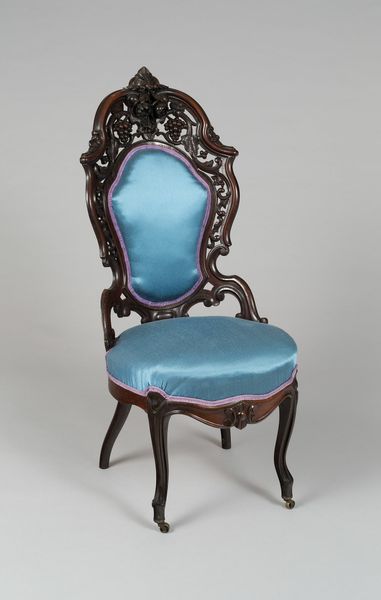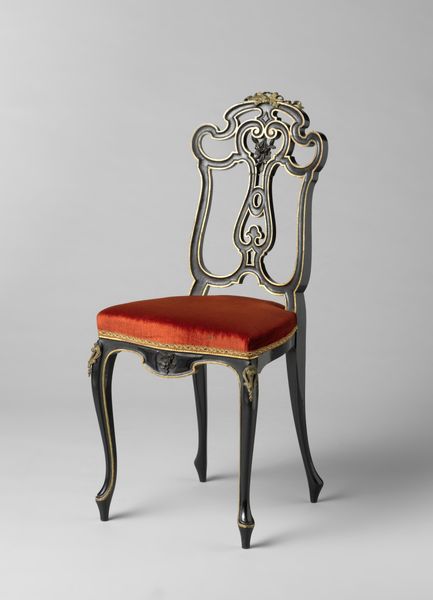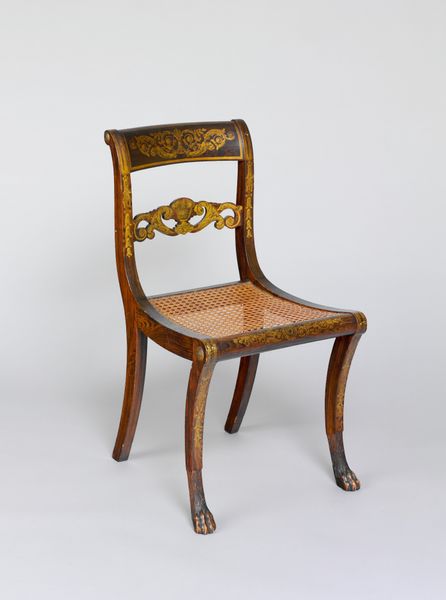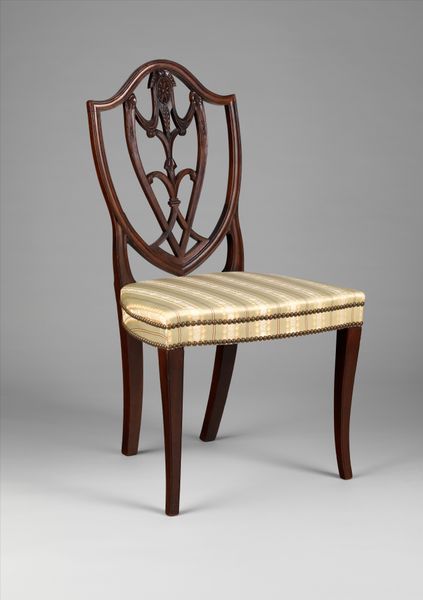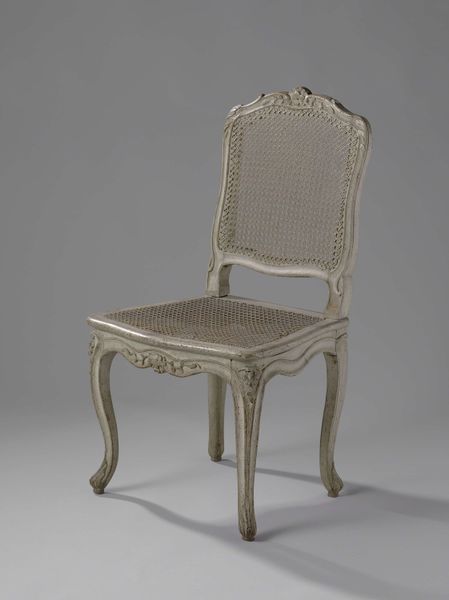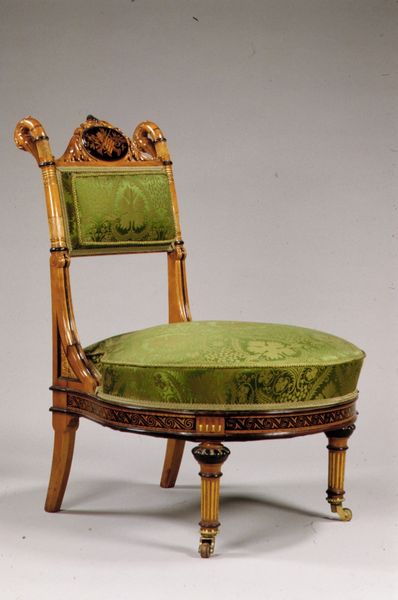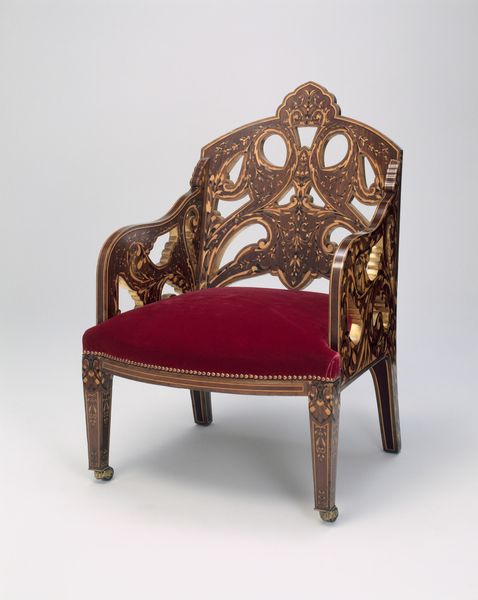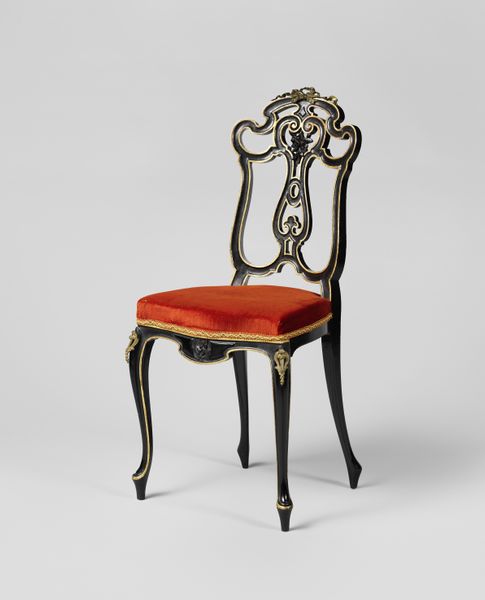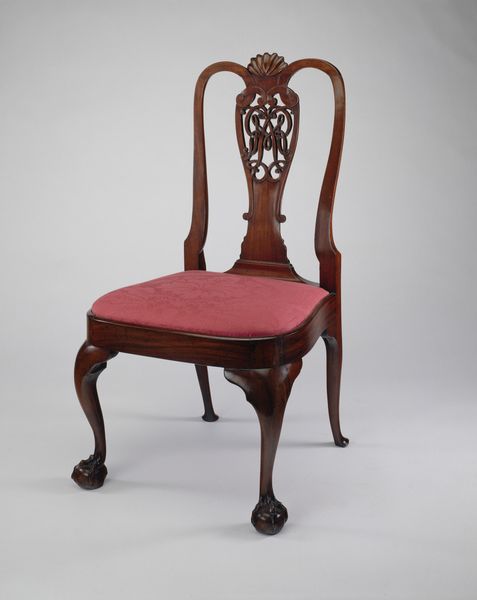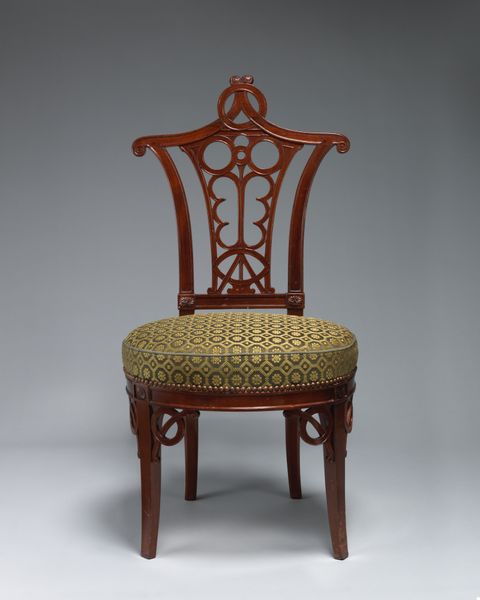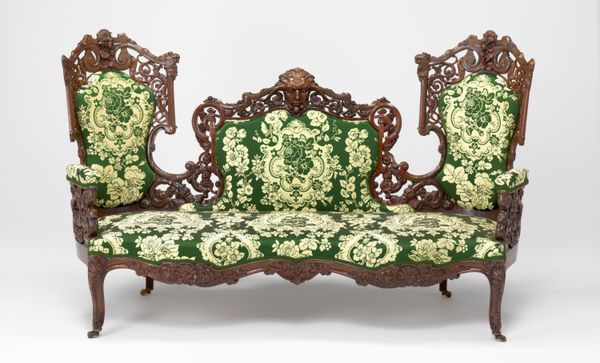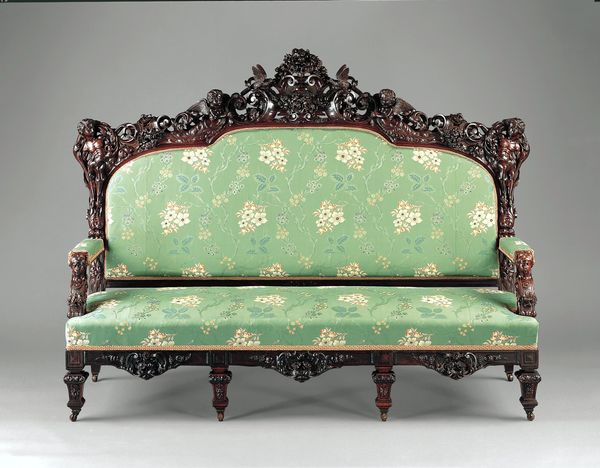
painting, wood
#
neoclacissism
#
painting
#
furniture
#
wood
#
decorative-art
Dimensions: 96.5 × 54 × 47 cm (38 × 21 1/4 × 18 1/2 in.)
Copyright: Public Domain
Editor: Here we have a Side Chair, made around 1796, currently at the Art Institute of Chicago. It's crafted from painted wood and gives off a really formal, almost austere vibe despite the floral decorations. How would you interpret this piece? Curator: It's easy to see it as simply a decorative object, but this chair speaks volumes about power and status in the late 18th century. Neoclassicism, the artistic movement of the time, was heavily influenced by Enlightenment ideals. Consider who this chair was made for; it probably wasn't just for sitting. Editor: Right, it does seem more like a statement piece than something you'd lounge in! The delicate painting, especially that stylized palm on the back, what’s the message? Curator: The imagery, even the choice of delicate colours, links to specific gendered roles and expectations of elite women who may have used this chair. Think about it: restraint, virtue, a connection to nature, all key attributes prized in women of the time. The chair, in its very design, reinforces societal norms and expectations of proper conduct. Editor: So the chair isn't just furniture; it’s a symbol loaded with social messaging. Curator: Exactly. We must ask, whose comfort and whose values are reflected in this design? How does it contribute to a broader system where aesthetics and objects are deployed to express not just beauty, but a political agenda? Editor: That’s a really fascinating perspective. I initially just saw a pretty chair, but now I understand its role in shaping social identities. Curator: Precisely. By analyzing the design elements through a gendered lens, we uncover the chair's subtle yet potent role in upholding structures of power within that era.
Comments
No comments
Be the first to comment and join the conversation on the ultimate creative platform.
